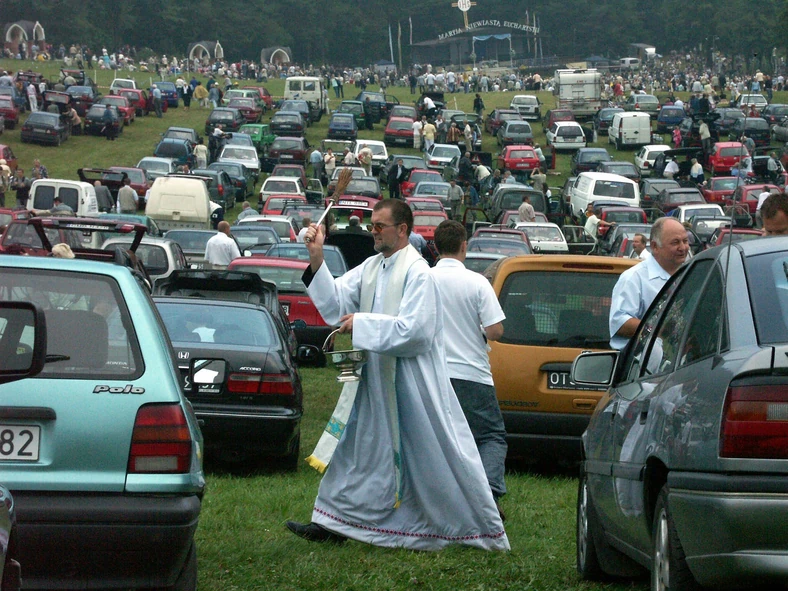The apparitions of the Blessed Virgin Mary in Gietrzwałd offer a unique opportunity to explore faith, history, and culture. This event, deeply rooted in Polish Catholicism, can enrich your teaching. Let's explore some aspects of this event and how it can be approached in your classroom.
Understanding the Apparitions
The Gietrzwałd apparitions took place in 1877, in what was then East Prussia. This region was under Prussian rule at the time. The Virgin Mary reportedly appeared to two young Polish girls, Justyna Szafryńska and Barbara Samulowska. These apparitions occurred daily, lasting for several months.
The messages received were delivered in Polish. This language was significant, as it emphasized Polish identity during a period of Germanization. The Virgin Mary’s messages often revolved around prayer, penance, and resisting cultural assimilation. The core message was to remain faithful to God and to Polish traditions.
The apparitions were met with mixed reactions. Many Polish Catholics embraced them. However, the Prussian authorities remained skeptical and even hostile. Despite this, the site became a significant pilgrimage destination.
Teaching Tips for Educators
When introducing Gietrzwałd to students, start with historical context. Explain the political situation of Poland under Prussian rule. Focus on the cultural struggles of the Polish people.
Use visual aids, such as maps and images. This can help students understand the geographical location and the atmosphere of the time. Pictures of the basilica in Gietrzwałd can also add depth.
Emphasize the role of faith and belief. Acknowledge that apparitions are a matter of religious belief. Present the information objectively and respectfully. Encourage open-minded discussion.
Consider incorporating primary source material. Excerpts from accounts of the apparitions can be powerful. These can provide students with a more direct connection to the events. Translations may be necessary for younger students.
Engaging Activities
Class discussions are a great way to explore the topic. Facilitate discussions about the role of faith in identity. Ask students how they think people might have felt during that time. Encourage respectful debate.
Organize a research project. Students can research different aspects of the Gietrzwałd apparitions. This could include the historical context, the lives of the visionaries, or the impact on Polish culture. Presentations can be done in class to make the subject more engaging.
Invite a guest speaker. A priest, historian, or someone familiar with Polish culture can offer valuable insights. This person can provide a different perspective and answer student questions.
Addressing Common Misconceptions
One common misconception is that the Gietrzwałd apparitions were solely a Polish phenomenon. While deeply connected to Polish identity, they also resonate with broader Catholic beliefs about Marian apparitions. Emphasize the universal aspect of faith alongside its cultural expressions.
Another misconception is that apparitions are universally accepted as fact. Clearly explain the difference between faith-based acceptance and historical evidence. Frame the apparitions within the context of religious belief and cultural significance.
It's important to avoid portraying the Prussian authorities as entirely malicious. While there was certainly political tension and cultural suppression, present the situation with nuance. Encourage students to understand the complexities of the historical context.
Making it Engaging
Connect the Gietrzwałd apparitions to themes of cultural identity. Discuss how faith can play a role in preserving cultural heritage. Explore the challenges faced by marginalized communities in maintaining their traditions. This can make the topic more relevant to students' own experiences.
Relate the story to broader themes of social justice and resistance. Discuss how faith can inspire people to stand up for their rights. Explore examples of religious movements that have played a role in social change. This connects faith to tangible issues that students can understand.
Use multimedia resources. Show documentaries, news reports, or video clips related to Gietrzwałd. These resources can help bring the story to life. Incorporate music or art inspired by the apparitions to make the lesson more sensory and engaging.
Ethical Considerations
Approach the topic with sensitivity. Be mindful of students from different religious backgrounds. Respect their beliefs and avoid proselytizing. Create a safe space for open and honest discussion.
Encourage critical thinking. Help students evaluate sources of information critically. Teach them to distinguish between fact and opinion. Encourage them to develop their own informed perspectives.
Focus on the historical and cultural aspects. Emphasize the impact of the apparitions on Polish society. Explore the themes of faith, identity, and resistance. This approach will provide a well-rounded educational experience.
Conclusion
The apparitions of the Blessed Virgin Mary in Gietrzwałd provide a rich and meaningful topic for exploration in the classroom. By approaching the subject with sensitivity, historical awareness, and engaging teaching methods, educators can help students understand the complex interplay of faith, culture, and history. It is a valuable lesson in understanding the power of faith in times of adversity.

